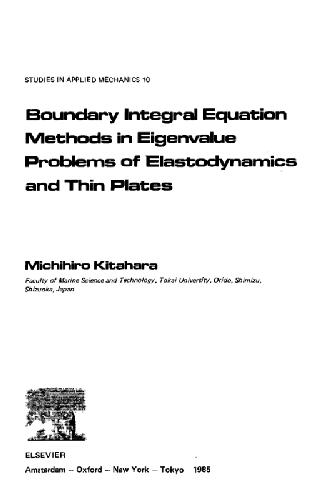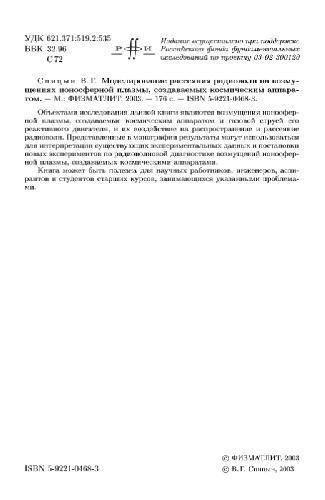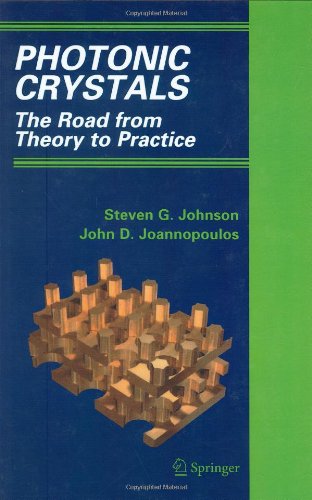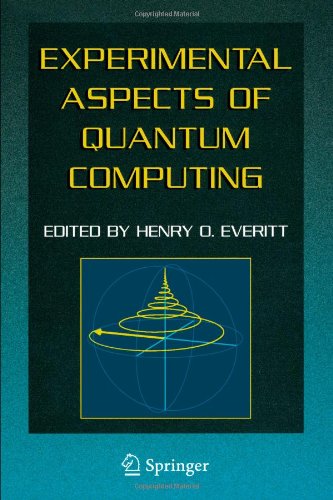B. K. Ridley9780521516273, 0521516277
Table of contents :
Cover……Page 1
Half-title……Page 3
Title……Page 5
Copyright……Page 6
Contents……Page 7
Preface……Page 13
Introduction……Page 15
1.1 General Remarks……Page 23
1.2 Early Models of Optical-Phonon Confinement……Page 24
1.2.1 The Dielectric-Continuum (DC) Model……Page 25
1.2.2 The Hydrodynamic (HD) Model……Page 30
1.2.3 The Reformulated-Mode (RM) Model……Page 32
1.2.4 Hybrid Modes……Page 35
1.3.1 The Scattering Rate……Page 36
1.3.2 The Coupling Coefficients……Page 38
1.3.3 The Overlap Integral in 2D……Page 41
1.3.4 The 2D Rates……Page 43
1.3.5 The 1D Rates……Page 48
1.4 The Interaction with Model Confined Phonons……Page 49
2.1.1 Introduction……Page 56
2.1.2 The Envelope-Function Equation……Page 58
2.1.3 The Local Approximation……Page 60
2.1.4 The Effective-Mass Approximation……Page 62
2.2 The Confinement of Electrons……Page 63
2.3 The Confinement of Holes……Page 67
2.4 Angular Dependence of Matrix Elements……Page 76
2.5 Non-Parabolicity……Page 78
2.6 Band-Mixing……Page 80
3.1 Introduction……Page 81
3.2.1 Bulk Solutions……Page 83
3.2.2 Interface between Nearly Matched Media……Page 85
3.2.4 Free Surface……Page 89
3.3 The Envelope Function……Page 90
3.4 Non-Local Operators……Page 92
3.5 Acoustic and Optical Modes……Page 94
3.6 Boundary Conditions……Page 97
3.7 Interface Model……Page 99
3.8 Summary……Page 105
Appendix: The Local Approximation……Page 108
4.1 Elasticity Theory……Page 111
4.2 Polar Material……Page 118
4.3 Polar Optical Waves……Page 119
4.4 Energy Density……Page 121
4.5 Two-Mode Alloys……Page 128
5.1 Non-Polar Material……Page 133
5.2 Polar Material……Page 136
5.3 Barrier Modes: Optical-PhononTunnelling……Page 141
5.5 Quantization of Hybrid Modes……Page 151
6.1 Superlattice Hybrids……Page 155
6.2 Superlattice Dispersion……Page 158
6.3 General Features……Page 162
6.4 Interface Polaritons in a Superlattice……Page 168
6.5 The Role of LO and TO Dispersion……Page 169
6.6 Acoustic Phonons……Page 171
7.2 Monolayers……Page 174
7.2.1 Single Monolayer……Page 176
7.2.2 Double Monolayer……Page 180
7.3 Metal-Semiconductor Structures……Page 184
7.4 Slab Modes……Page 187
7.5 Quantum Wires……Page 190
7.6 Quantum Dots……Page 195
8.1 Introduction……Page 196
8.2 Scattering Rate……Page 197
8.3 Scattering Potentials for Hybrids……Page 198
8.4 Matrix Elements for an Infinitely Deep Well……Page 199
8.5 Scattering Rates for Hybrids……Page 201
8.6 Threshold Rates……Page 203
8.7 Scattering by Barrier LO Modes……Page 206
8.8 Scattering by Interface Polaritons……Page 208
8.9.1 Intrasubband Rates……Page 211
8.9.2 Intersubband Rates……Page 212
8.10 Comparison with Simple Models……Page 213
8.11 The Interaction in a Superlattice……Page 216
8.12 The Interaction in an Alloy……Page 219
8.13 Phonon Resonances……Page 220
8.14 Quantum Wire……Page 222
8.15 The Sum-Rule……Page 223
Appendix: Scalar and Vector Potentials……Page 226
9.1.1 Introduction……Page 231
9.1.2 The Coulomb Scattering Rate……Page 234
9.1.3 Scattering by Single Charges……Page 235
9.1.4 Scattering by Fluctuations in a Donor Array……Page 237
9.1.5 An Example……Page 239
9.2 Interface-Roughness Scattering……Page 241
9.3 Alloy Scattering……Page 244
9.4.1 Basic Formulae for the 2D Case……Page 245
9.4.2 Discussion……Page 248
9.5.1 Phonon-Phonon Processes……Page 250
9.5.2 Charged-Impurity Scattering……Page 253
9.5.3 Alloy Fluctuations and Neutral Impurities……Page 254
9.5.4 Interface-Roughness Scattering……Page 255
NOTES……Page 257
10.1 Introduction……Page 258
10.2 The Density Matrix……Page 259
10.3 The Dielectric Function……Page 262
10.4 The 3D Dielectric Function……Page 264
10.5 The Quasi-2D Dielectric Function……Page 266
10.6 The Quasi-1D Dielectric Function……Page 273
10.7 Lattice Screening……Page 279
10.8 Image Charges……Page 280
10.9 The Electron-Plasma/Coupled-Mode Interaction……Page 282
10.10 Discussion……Page 286
11.1 The Boltzmann Equation……Page 289
11.2 Net Scattering Rate by Bulk Polar-Optical Phonons……Page 290
11.3 Optical Excitation……Page 292
11.4 Transport……Page 295
11.4.1 The 3D Case……Page 298
11.4.2 The 2D Case……Page 300
11.4.3 The 1D Case……Page 302
11.4.4 Discussion……Page 303
11.5 Acoustic-Phonon Scattering……Page 304
11.5.1 The 3D Case……Page 305
11.5.2 The 2D Case……Page 307
11.5.3 The 1D Case……Page 308
11.6 Discussion……Page 310
11.7.2 Energy- and Momentum-Relaxation Rates……Page 314
11.7.3 Low-Temperature Approximation……Page 318
11.7.5 High-Temperature Approximation……Page 320
12.1 Introduction……Page 325
12.2 The Elliot-Yafet Process……Page 327
12.3 The D’yakonov-Perel Process……Page 331
12.3.1 The DP Mechanism in a Quantum Well……Page 336
12.3.2 Quantum Wires……Page 338
12.5 The Bir-Aranov-Pikus Mechanism……Page 340
12.6 Hyperfine Coupling……Page 343
Appendix 1……Page 346
Appendix 2……Page 347
Appendix 3……Page 349
13.1 The Wurtzite Lattice……Page 350
13.2 Energy Band Structure……Page 352
13.3 Eigenfunctions……Page 354
13.4 Optical Phonons……Page 357
13.5 Spontaneous Polarization……Page 360
Appendix 1 Symmetry……Page 361
14.1 Single Heterostructures……Page 363
14.2 Piezoelectric Polarization……Page 365
14.3 Polarization Model of Passivated HFET with Field Plate……Page 368
14.4.1 Strain……Page 372
14.4.3 Fields……Page 373
14.5 The AlN/GaN Superlattice……Page 374
14.6 The Quantum-Cascade Laser……Page 380
Appendix Airy Functions……Page 382
15.1 Introduction……Page 383
15.2 Bloch Oscillations……Page 384
15.3 Negative-Mass NDR……Page 387
15.3.1 The Esaki–Tsu approach……Page 389
15.3.2. Lucky Drift……Page 390
15.3.3 The Hydrodynamic Model……Page 391
15.4 Ballistic Transport……Page 392
15.4.2 Transit-Time Oscillations in a Short Diode……Page 393
15.4.3 Negative-Mass NDR……Page 394
15.4.4 Bloch Oscillations……Page 397
15.5.1 Optical Non-Linear Rectification…….Page 401
15.5.3 Dember Diffusion……Page 402
15.6.1 Photomixing……Page 403
15.6.2 Quantum-Cascade Lasers……Page 404
Appendix……Page 406
Appendix 1 The Polar-Optical Momentum-Relaxation Time in a 2D Degenerate Gas……Page 407
Appendix 2 Electron/Polar Optical Phonon Scattering Rates in a Spherical Cosine Band……Page 409
References……Page 411
Index……Page 420







Reviews
There are no reviews yet.